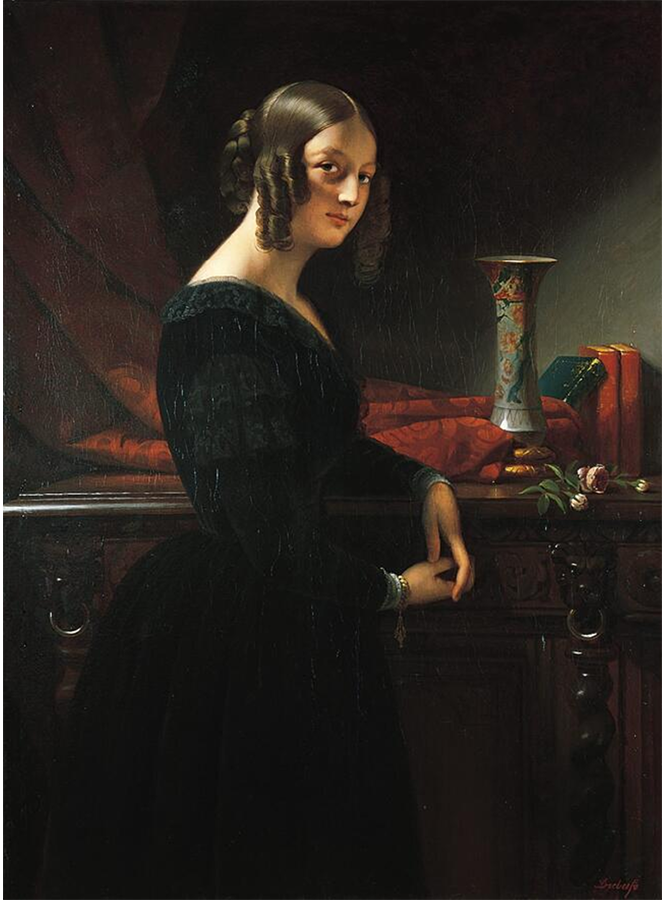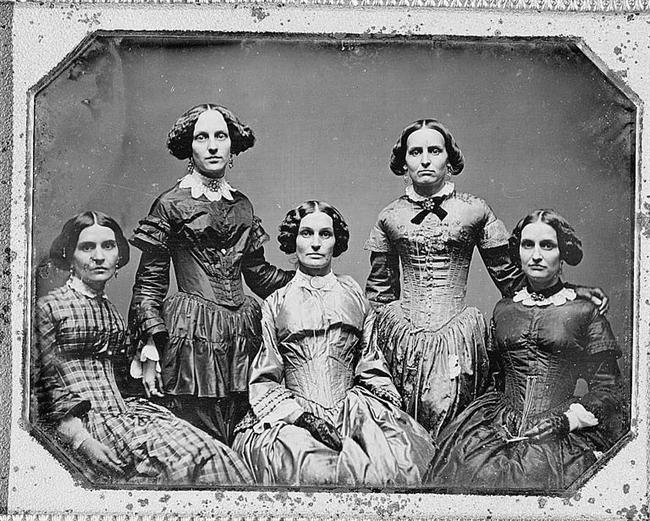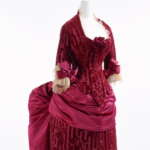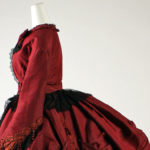
Dress (England), c. 1842.
Block-printed wool, silk ribbon, metal (hooks), baleen, c. 1842. National Gallery of Victoria, Melbourne, Purchased through The Art Foundation of Victoria with the assistance of David Syme & Co. Limited, Fellow, 1977, D67-1977. Image: National Gallery of Victoria, Melbourne

Young Woman, c. 1843
Claude-Marie Dubufe (French, 1790-1864). Portrait of a Young Woman, c. 1843. Oil on canvas; 129.8 x 97.5 cm (51-1/8 x 38-3/8 in). Pasadena: Norton Simon Museum, M.1977.13.2.P. Source: Norton Simon Museum

Clark sisters
Five women, three-quarter length portraits, all facing front. 1840. The photograph documents Grandmother and aunts of photographer Frances Benjamin Johnston. Image: Pinterest

Dress (England), c. 1842.
Block-printed wool, silk ribbon, metal (hooks), baleen, c. 1842. National Gallery of Victoria, Melbourne, Purchased through The Art Foundation of Victoria with the assistance of David Syme & Co. Limited, Fellow, 1977, D67-1977. Image: National Gallery of Victoria, Melbourne

Young Woman, c. 1843
Claude-Marie Dubufe (French, 1790-1864). Portrait of a Young Woman, c. 1843. Oil on canvas; 129.8 x 97.5 cm (51-1/8 x 38-3/8 in). Pasadena: Norton Simon Museum, M.1977.13.2.P. Source: Norton Simon Museum

Clark sisters
Five women, three-quarter length portraits, all facing front. 1840. The photograph documents Grandmother and aunts of photographer Frances Benjamin Johnston. Image: Pinterest

Dress (England), c. 1842.
Block-printed wool, silk ribbon, metal (hooks), baleen, c. 1842. National Gallery of Victoria, Melbourne, Purchased through The Art Foundation of Victoria with the assistance of David Syme & Co. Limited, Fellow, 1977, D67-1977. Image: National Gallery of Victoria, Melbourne

Young Woman, c. 1843
Claude-Marie Dubufe (French, 1790-1864). Portrait of a Young Woman, c. 1843. Oil on canvas; 129.8 x 97.5 cm (51-1/8 x 38-3/8 in). Pasadena: Norton Simon Museum, M.1977.13.2.P. Source: Norton Simon Museum

Clark sisters
Five women, three-quarter length portraits, all facing front. 1840. The photograph documents Grandmother and aunts of photographer Frances Benjamin Johnston. Image: Pinterest




